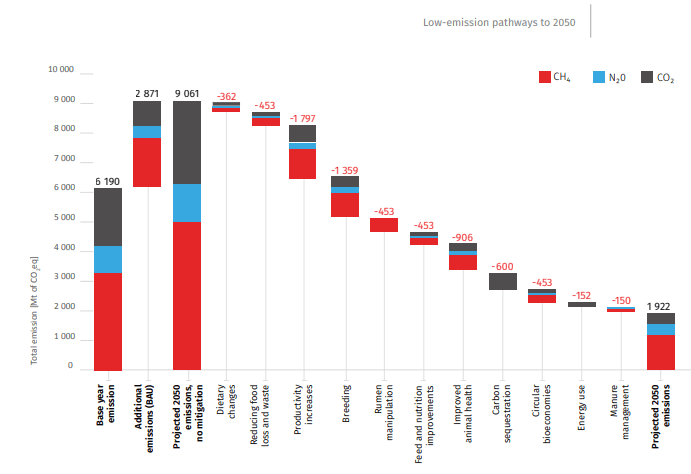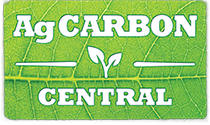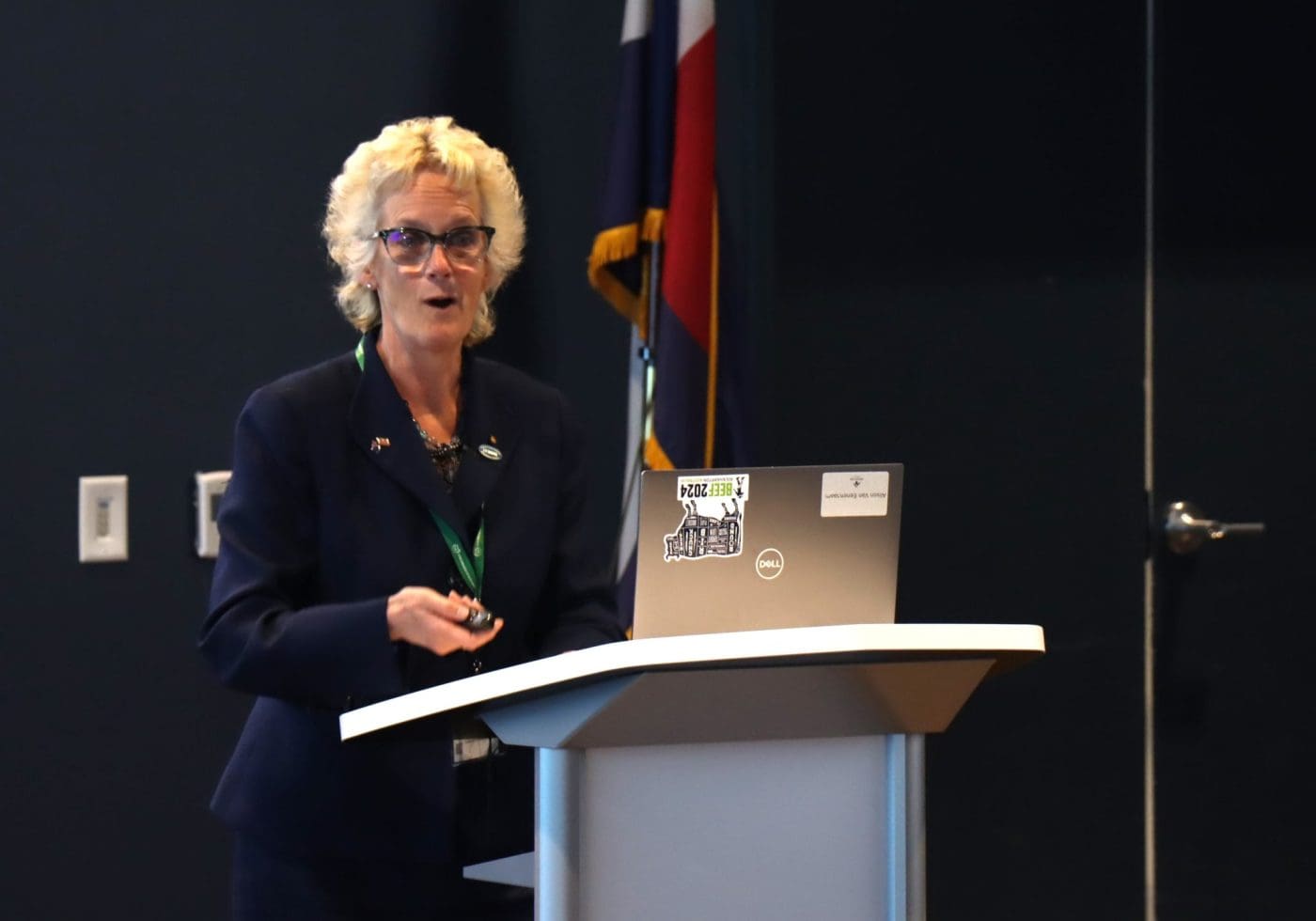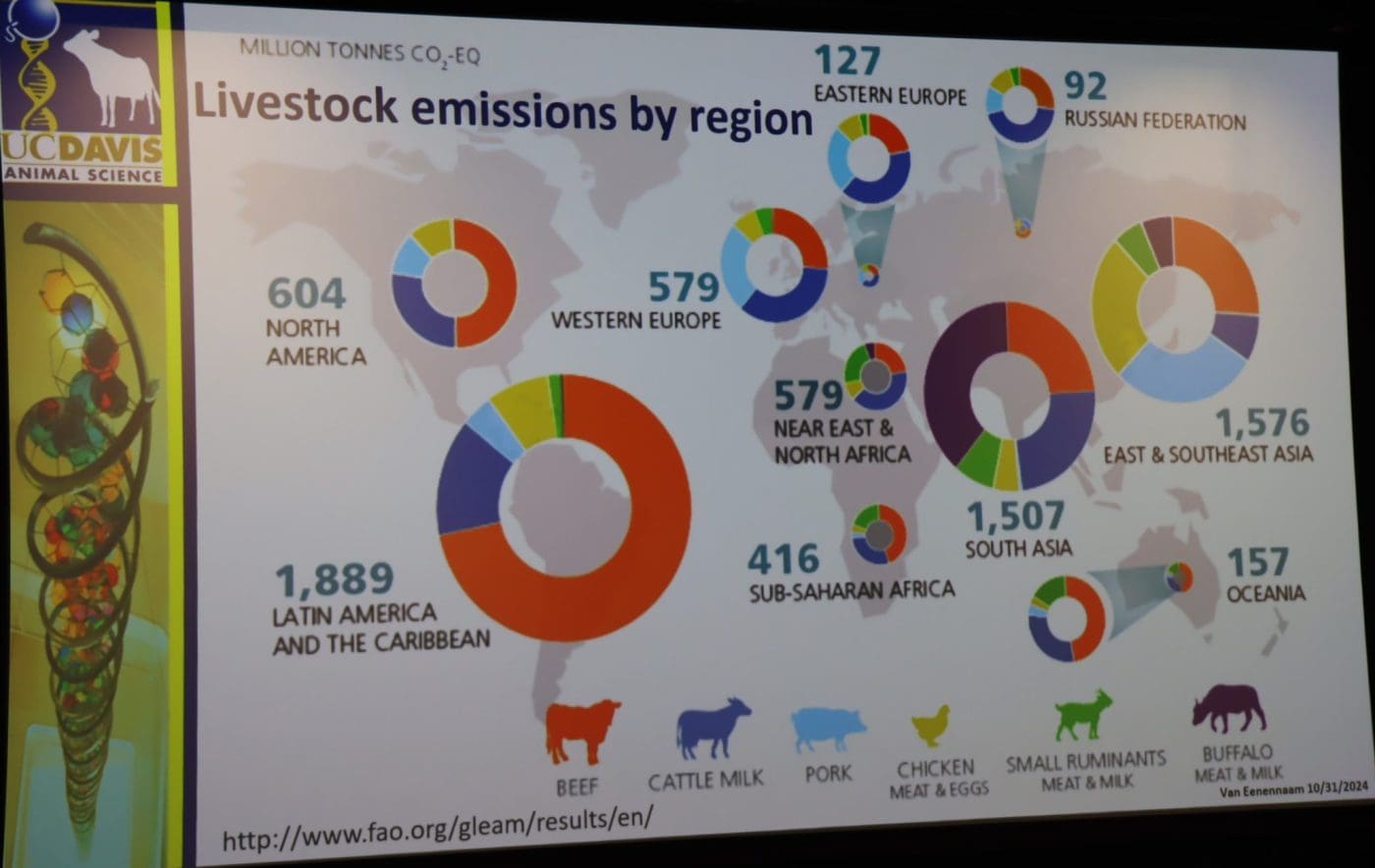AS pressure mounts on the livestock industry to reduce its emissions while feeding an ever-growing population, a well-known researcher and livestock science communicator says there are opportunities across the globe to improve genetic performance.
Australian-born University of California Davis geneticist Alison Van Eenennaam gave the recent Societal Role of Meat conference in Denver an entertaining take on areas of untapped potential in the global push to reduce livestock emissions.
The basic message was that where the industry is producing more with less it was reducing its emissions footprint.
In opening her speech, she gave two clear examples of where genetic performance had helped improved efficiencies. One being the Australian sheep industry that has dropped its sheep numbers considerably over the years and still produces the same amount of meat. The other is the global poultry industry, which has relied heavily on genetics to become the most consumed protein in the world.
Dr Van Eenennaam used a widely circulated graph put together by the United Nations Food and Agriculture Organisation, showing the pathways to reducing livestock emissions – where the two biggest opportunities for reduction were improved productivity and genetics.
She said another point made by the FAO in its pathways to lowering emissions report was that farmers were key stakeholders.
“As an extension officer, what this says to me is ‘don’t alienate the world’s farmers, let’s work with them because they are our partner’,” she said.

United Nations pathways to lowering emissions report showing the options for lowering livestock emissions. Source: UN FAO
Improving production in developing countries
Dr Van Eenennaam said the biggest chance to improve efficiencies and ultimately reduce emissions was in low-to-middle income countries, which are responsible for most of the forecast increase in demand for protein and have some of the world’s biggest herds.
She said India had about 300m bovids (cattle and buffalo), about 382m head across the continent of Africa and about 384m in South America.
“We have seen tremendous growth in numbers across Africa and South America and that is where there are opportunities to help improve efficiencies,” Dr Van Eenennaam said.
“If you look at the high-income countries where we are getting a lot of pushback against livestock, they are actually pretty efficient. Where the demand for meat is coming from is the developing countries and that is where the efficiencies are less.
“The developing world contributes about 75pc of the emissions from ruminant animals.”
Hard to see the role of alternative proteins
One of the smallest potential contributors to reducing livestock emissions was switching diets.
She said given that most of the forecast increase in demand for protein is coming from developing countries and that developed countries were producing most of the alternative, lab-grown and plant-based protein, it was hard to see their potential for servicing the increased global demand.
“I live in California, I am well familiar with venture capitalists and the bros that like to run fast and break things,” she said.
“If you look at the global location of these companies, they are almost exclusively located in the first world where there is both electricity to run their factories and venture capitalists to sponsor it. I think if your intention is try and address this increased demand for animal-sourced food, you are kind of in the wrong place.
“There is a particular CEO saying that his company can replace all livestock and I think completely naïve comments like that, by an otherwise intelligent person, are just unacceptable.”
Opportunity in improving genetics
Referring back to the FAO graph, Dr Van Eenennaam pointed out that genetics represented a potential 15pc reduction in global emissions.
She said in high-income countries the efficiencies were already taking place.
“To explain in one go, the greenhouse gas intensity of a glass of milk in the United States is about a third of what it used to be,” she said.
Dr Van Eenennaam said the American dairy industry had been a significant adopter of genomic selection and sexed semen, which had significantly improved its efficiency in a short space of time.
The other opportunity the efficiency of the dairy industry brought up was the potential to impregnate cows not needed for dairy replacement heifers with beef semen, or even beef embryos, to produce beef calves – a trend that has become known as “beef-on-dairy”.
She said it was a clear win-win for both the dairy and beef industries and took little extension to drive adoption.
“You have still given the dairy industry what they need, which is a calf to initiate lactation, except now it is a more valuable calf that dairy farmers can then sell to the calf feeders and into the beef supply chain,” she said.
“On average the greenhouse gas intensity of beef produced in beef systems is about four times higher on global average than beef coming out of dairy systems – which historically was for pet food, veal markets and sometimes they were just knocked on the head.
“I have never seen a technology take off like this combination of genomic testing, female sexed semen for replacement heifers, and beef semen for the rest of the dairy has with virtually no extension effort.”
Dr Van Eenennaam said other countries, like India, were investing in sexed semen for dairy cattle.
“Sexed semen is not without its challenges, like lower fertility,” she said.
“But the most important thing is that you can use sexed semen to produce only female offspring and avoid unwanted male calves without impacting the livelihood of Indian dairy farmers.”
Time for gene editing regulations to keep up
Gene editing has been one of Dr Van Eenennaam’s pet topics over the years, having led research into genome editing at UC Davis.
Like the sexed semen and beef on dairy calves, she said it was a way of introducing desirable traits to make animals more efficient.
“If you look at the GMO controversies of the 1990s, they were driven by a number of environmental groups, particularly Greenpeace, and competing business interests giving it bad press,” she said.
Dr Van Eenennaam said there were few examples of what happens when gene edited products get to market – however, one example in Japan with a gene edited fish was positive.
“There was a researcher at a Japanese university, who was working on this and thought it would be cool to get this to market,” she said.
“It was anticipated that when this product came to market that there would be blowback. There were some social actions where they tried to get everyone riled up and just didn’t get legs. It actually received good press and I think that was because it was a local researcher and not ‘big, bad Monsanto’.
“Maybe consumers are getting more aware of this and that we can’t just keep saying no to innovations that are going to improve the sustainability of our food system.”
- Beef Central’s Eric Barker travelled to Denver to participate in the conference
 More science from the Societal Role of Meat conference
More science from the Societal Role of Meat conference
- What millions of years of herbivores can tell us about reducing emissions and regenerating forests
- “Nourishment table” a new approach to dietary guidelines that prioritises protein
- More studies reinforce importance of red meat in mitigating disease
- Scientists call for end to widespread discreditation of meat


